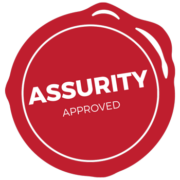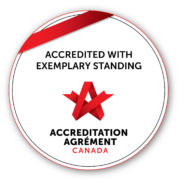Bulletin #4 – Infection Prevention and Control
INFECTION PREVENTION AND CONTROL – BEE PREPARED!
Infection Prevention and Control theme focus is the first Quality and Safety theme of our series of nine themes between now and our onsite Accreditation survey October 22 – 25, 2018. It focuses on reducing the risk of health care associated infections and their impact across the care continuum. Specifically, it covers hand hygiene training and compliance (audits), infection rates and guidelines and our processes for cleaning and disinfecting medical devises and equipment. Within the IP&C there are four ROPs that must be met to successfully complete Accreditation.
Required Organizational Practice (ROP)
1 Hand hygiene audit
Surveyor Question: How do we evaluate compliance with accepted hand hygiene practices?
Answer: Yes we evaluate compliance with accepted hand hygiene practices
Evidence: How do we do this?
- We have a policy
- We have trained Hand Hygiene auditors
- We conduct hand hygiene audits
- Audits are reviewed with the Infection Prevention and Control Committee, Leaders, Managers, at unit meetings and department meetings
- Audits are distributed to Leaders & managers to review with their staff at unit/Dept. meetings
- Concerns and trends are followed up on
- Our audits have provided valuable information to our leaders and staff in developing and implementing strategies to improve hand hygiene. For example, based on feedback, we have installed more hand sanitizers in targeted areas.
ROP 2 Hand hygiene education and training
Surveyor Question: What education and training has been given on hand hygiene?
Answer: We follow our Menno Place policies and protocols, international, Federal and Provincial infection control guidelines.
Evidence: How do we do this?
Our hand hygiene training is designed to help reduce the transmission of health care associated infections and promote health care worker compliance with performing hand hygiene 100% of the time.
- Annual Hand hygiene education for all staff and volunteers
- Hand hygiene education at orientation and on Surge Learning (ongoing)
- Annual safety month (April – COR and Education Fair)
- Hand hygiene is discussed with all families during move-in
- Posters throughout the building
- Hand hygiene is discussed at family councils and resident councils
- Education – Fact sheet – posted in Newsletter
ROP 3 Infection Rates
Surveyor Question: How do we track infection information, analyze it and communicate this information throughout the organization?
Answer: We track infection rates, analyze the information to identify clusters, outbreaks and trends; this is shared throughout the organization.
Evidence: How do we do this?
- We track infections by completing the infection log monthly
- Infection surveillance sheets for all infections
- All outbreaks are reported to our Infection Control Lead (Kim Cantwell), who follows up according to the infection control manual’s outbreak management guidelines from FHA
- We have an Infection Prevention and Control Committee
- We analyze monthly data
- Outbreaks are managed in partnership with health authority medical health officers.
- Outbreaks in the community are reported to us by the Medical Health Officer
- Infection rates are displayed on a report sheet every month; the graph is shared with staff at unit/department meetings
- We have a Policy: APS 5.0-5.5 – Infection Prevention and Control Program
ROP 4 Processes for cleaning, disinfecting, and sterilizing medical devises and equipment are monitored and improvements are made when needed
Surveyor Question: How do you monitor the cleaning and disinfection of equipment?
Evidence: How do we do this?
- We have cleaning processes for medical equipment in Section 13 of the FHA Infection Prevention Control Manual
- All reprocessing of re-usable equipment is done in accordance with the MOH Guidelines entitled “Best Practice Guidelines for the Cleaning, Disinfection and Sterilization of Medical Devices in Health Authorities”.
- Single and individual use items are not preprocessed or reused. We use disposable syringes, O2 masks, scissors, suture kits, suction and tube feeding apparatus etc.
- Education for Reprocessing for Reusable Medical Devices and Equipment Education (PP) on orientation and on Surge (ongoing education for care staff)





